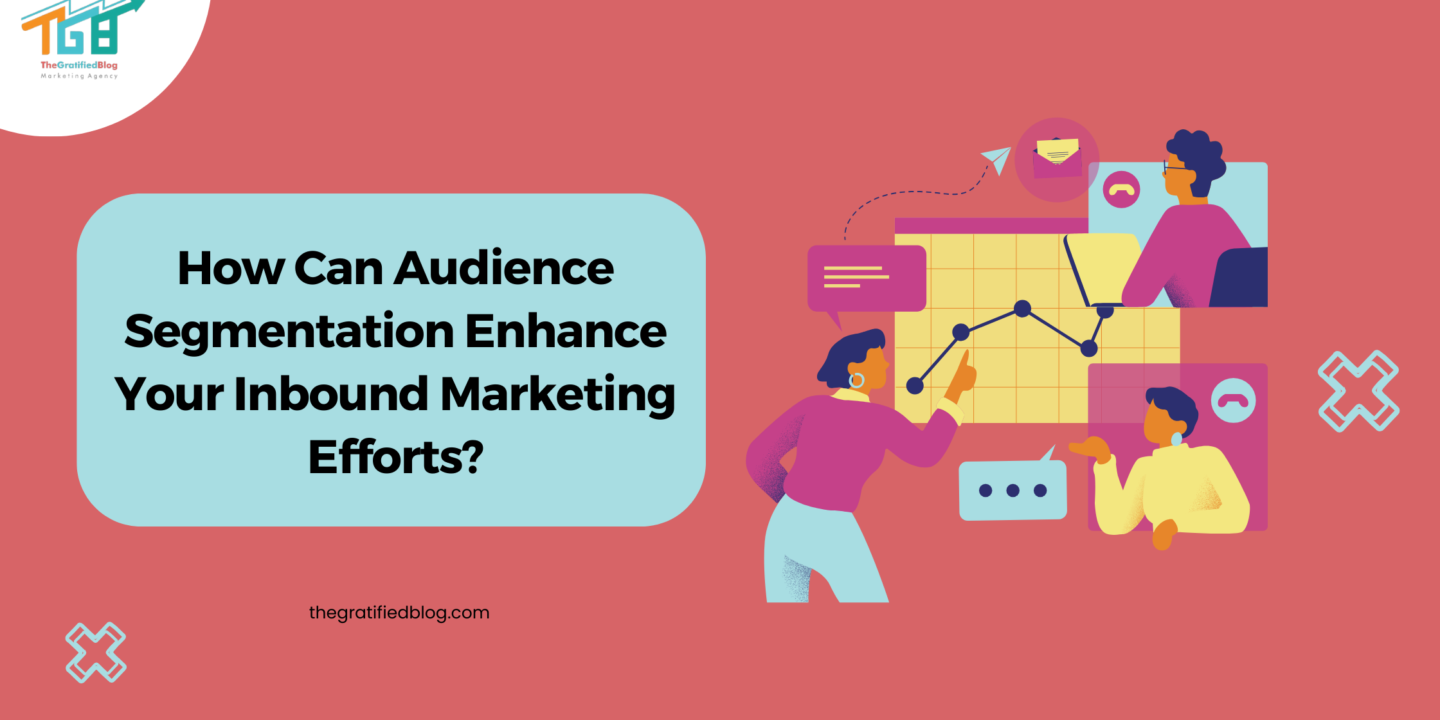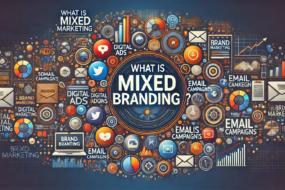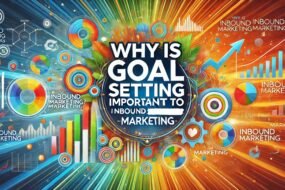
In the ever-changing domain of digital marketing, the quest for continuous pursuit of success is a constant journey to connect with your audience meaningfully, and it has never been more crucial. That is where the power of audience segmentation shines. If you’ve been wondering how to elevate your inbound marketing strategy to the next level, look no further.
This blog will explore “How can audience segmentation enhance your inbound marketing efforts?” Buckle up as we embark on a journey to uncover the transformative potential of audience segmentation in amplifying the impact and effectiveness of your inbound marketing campaigns.
Whether you possess extensive experience in marketing or are embarking on your journey, understanding and harnessing the capabilities of audience segmentation is a game-changer you will want to take advantage of.
Let’s explore the ins and outs of this invaluable strategy and discover how it can revolutionize your marketing endeavors.
So, let’s get started;
What Is Audience Segmentation?
Audience segmentation divides your target audience into distinct and homogenous groups based on specific criteria. By employing segmentation, marketers can customize their marketing strategies to each group’s unique characteristics and preferences, ultimately improving the effectiveness of their campaigns.
The Role Of Data In Segmentation
Data assumes a crucial role in the segmentation of audiences, serving as the cornerstone for effective marketing strategies. The initial step involves comprehensive data collection by marketers, seeking to understand various facets of their audience. This collected data encompasses multiple pieces of information, including demographics, behavioral patterns, and interests. By delving into these details, marketers gain valuable insights into the diverse characteristics that define their audience.
One fundamental aspect of this data-driven approach is the reliance on factual information rather than assumptions. By basing segmentation on real insights derived from data, marketers can craft strategies that are not only more accurate but also highly targeted. That ensures that marketing efforts are aligned with the audience’s preferences, behaviors, and needs, leading to more impactful and resonant campaigns.
Diverse data types are harnessed in the segmentation process, each offering a unique perspective on the audience. Demographic data, encompassing factors such as age, gender, and location, provides a foundational understanding of who the audience is. Behavioral data, derived from analyzing purchase history and website interactions, delves into how the audience engages with products and services. Psychographic data, which explores lifestyles and values, adds depth by uncovering the motivations and preferences that drive consumer decisions. Additionally, geographic data, including location-based preferences, contextualizes the audience’s preferences within specific regions.
The synergy of these varied data types creates a holistic and comprehensive view of the audience. This nuanced understanding allows marketers to develop finely tuned segments, ensuring that their strategies are relevant and resonate deeply with specific subsets of their target audience. Data serves as the guiding force, empowering marketers to navigate the intricacies of audience segmentation with precision and relevance.
Benefits Of Audience Segmentation
- Improved Personalization: It allows marketers to craft highly personalized content and messages for each segment. This customized approach resonates better with individuals, increasing the likelihood of engagement and conversion.
- Higher Engagement Rates: When content aligns with the interests and needs of a specific segment, engagement rates tend to soar. Segmented campaigns deliver more relevant content, capturing the right audience’s attention at the right time.
- Enhanced Conversion Rates: Tailoring marketing efforts to each segment’s unique characteristics and preferences significantly improves conversion rates. Relevant messaging and offers are more likely to convert prospects into customers, driving business growth.
Inbound Marketing Explained
Inbound marketing centers on potential customers’ attraction, engagement, and delight through relevant and helpful content. Its primary purpose is to create meaningful interactions with prospects, guiding them through the buyer’s journey and ultimately converting them into loyal customers.
Stages Of Inbound Marketing
- Attract: At the “Attract” stage, the primary objective is to increase brand visibility and capture the attention of potential customers. That involves employing strategies like creating informative blog posts, leveraging the power of social media, and optimizing content for search engines (SEO). By making your brand easily discoverable, you aim to generate interest and draw in your target audience.
- Engage: In the “Engage” stage, the focus shifts to building meaningful relationships with prospects. Marketers utilize email campaigns, personalized content, and interactive experiences to nurture leads. The objective is to maintain the engagement of potential customers and guide them through the initial stages of the buyer’s journey, aiming to move them closer to making a purchase.
- Close: The “Close” stage involves converting leads into customers through strategic marketing efforts. Marketing automation, targeted email campaigns, and tailored content are crucial in providing prospects with the information they need to make informed purchase decisions. Effective lead nurturing and sales strategies are essential in guiding prospects through the final steps of the sales funnel and encouraging them to make a purchase.
- Delight: The “Delight” stage revolves around post-purchase experiences. Ensuring customers have a positive and memorable interaction with your brand after the purchase increases the likelihood of turning them into promoters. Satisfied customers are likely to become loyal patrons and potential advocates who recommend your brand to others, contributing to long-term success and business growth.
The Importance Of Content In Inbound Marketing
Content is the cornerstone of inbound marketing, acting as a compelling force that attracts potential customers to your brand. Its effectiveness lies in delivering valuable information, insights, and solutions tailored to address your target audience’s specific problems and needs.
Crafting top-notch content captivates and involves visitors and solidifies your brand as a leading figure in your industry. This twofold impact cultivates trust and credibility, which is essential for fostering lasting customer relationships and propelling business expansion.
How Can Audience Segmentation Enhance Your Inbound Marketing Efforts?
Audience segmentation and inbound marketing are powerful when aligned with specific goals. Let’s explore how segmentation enhances each stage of inbound marketing:
How Does Segmentation Enhance Attraction?
Segmentation is a potent tool for augmenting the attraction stage of inbound marketing. You can generate highly targeted and relevant content that appeals to different groups by categorizing your audience into segments based on specific criteria.
For example, consider a fitness equipment manufacturer. They can use segmentation to target two distinct segments: fitness enthusiasts looking for advanced equipment and beginners seeking essential workout gear. They can effectively attract and resonate with both groups by tailoring their content and advertising to each segment.
This approach ensures that their marketing efforts are not one-size-fits-all but speak directly to each audience’s unique interests and needs, increasing the chances of attracting and engaging potential customers.
How Segmentation Optimizes Engagement?
Segmentation plays a pivotal role in optimizing engagement within the inbound marketing process. Once you’ve attracted potential customers, you aim to keep them engaged. Segmentation allows you to understand each segment’s needs, preferences, and behaviors.
For example, let’s continue with the fitness equipment manufacturer. They can segment their audience further, identifying those interested in cardio equipment, weightlifting gear, or yoga accessories. Armed with this understanding, they can craft exceptionally personalized content, such as targeted email campaigns offering cardio enthusiasts information on the latest treadmills and workout routines. Simultaneously, they might engage weightlifting enthusiasts with content about strength training and new equipment.
This tailored approach ensures that your audience continues interacting with your brand because they receive content that aligns precisely with their interests, ultimately increasing engagement rates.
How Segmentation Closes The Deal?

Segmentation is about attracting and engaging your audience, Finalizing the deal, and transforming prospects into customers. Continuing with the fitness equipment manufacturer, they can use segmentation to refine their conversion strategies.
For instance, they can identify a segment of potential buyers who have expressed strong interest in a specific product line, such as home gym equipment. They increase the likelihood of conversion by sending targeted promotions, providing detailed product information, and addressing any questions or concerns specific to this segment. This focused approach reduces friction in the sales funnel and makes it easier for prospects to make a purchase decision.
By tailoring their strategies to each segment’s unique characteristics and preferences, the manufacturer maximizes their chances of closing deals successfully.
How Segmentation Enhances Customer Delight?

Segmentation continues to be valuable after the sale, enhancing customer delight.
For example, customers may have varying needs and expectations after purchasing fitness equipment. Some may want regular maintenance tips, while others seek guidance on optimizing their workouts. The fitness equipment manufacturer can provide tailored support and communication by segmenting their customer base. They can send maintenance reminders to one segment and offer personalized workout plans to another. This level of customization shows customers that the brand understands their specific requirements, enhancing their post-purchase experience.
Moreover, when customers receive recommendations, content, and offers that align with their interests and behaviors, they feel valued and appreciated, which fosters brand loyalty and long-term delight.
Now that we’ve delved into how audience segmentation can enhance your inbound marketing endeavors, it’s time to focus on the critical aspect of measuring and fine-tuning these segmentation efforts.
Measuring And Optimizing Segmentation Efforts
Here’s how you can measure and optimize segmentation efforts using practical examples:
Conversion Rates
To measure the impact of audience segmentation on conversion rates, begin by tracking how different segments respond to your marketing initiatives. For instance, you may notice that the segment interested in cardio equipment has a higher conversion rate when presented with promotions related to treadmills. In contrast, the weightlifting equipment segment may respond better to offers for weight benches.
Practical Example: If the conversion rate for the cardio equipment segment is 10% when exposed to treadmill-specific promotions but only 5% for promotions related to weight benches, this data indicates that segment-specific targeting significantly boosts conversion rates. To optimize this, allocate more resources and tailor your content to the cardio equipment segment.
Click-Through Rates
Click-through rates (CTR) provide insights into how well your segmented content resonates with different audience groups. Analyze the CTR for emails, social media posts, and ads targeting various segments. One segment consistently exhibits a higher CTR for specific content or offers.
Practical Example: If the segment interested in yoga accessories consistently clicks through at a rate of 15% when presented with blog posts about yoga routines and accessories, compared to a 7% CTR for general fitness content, this highlights the effectiveness of tailored content. To optimize, create more content specifically catering to this segment’s interests.
Engagement Levels
Engagement levels are a crucial indicator of how well your audience interacts with your brand. Monitor metrics such as social media likes, shares, comments, and website session duration for different segments. Identify which segments are more engaged and pinpoint the types of content or communication methods that resonate most with them.
Practical Example: You observe that the segment focused on weightlifting equipment engages more frequently with video content showcasing workout demonstrations. In contrast, the cardio equipment segment prefers written articles about cardiovascular health. To optimize engagement, allocate resources to produce more video content for the weightlifting and written content for the cardio segments.
FAQs
Q1: Why is audience segmentation important in inbound marketing?
A1: Audience segmentation in inbound marketing is crucial because it allows you to tailor your strategies to distinct groups, guaranteeing the relevance of your content and ensuring it resonates with the specific needs and preferences of different audience segments.
Q2: How does audience segmentation contribute to better engagement?
A2: Understanding the unique characteristics of different audience segments enables the creation of more personalized and targeted content. That, in turn, enhances engagement as your audience is more likely to find the information valuable and pertinent to their interests.
Q3: What role does audience segmentation play in lead generation?
A3: Audience segmentation significantly impacts lead generation by enabling you to identify and focus on high-potential leads. This focused strategy ensures that your marketing endeavors are aimed at individuals who are more likely to convert, optimizing the efficiency of your lead generation strategies.
Q4: How can audience segmentation improve the customer journey?
A4: Segmenting your audience allows you to map out the customer journey more effectively. By delivering the right content at each journey stage, you guide your audience seamlessly from awareness to consideration and, ultimately, to conversion, resulting in a more satisfying and streamlined customer experience.
Conclusion
Now that you’ve grasped the potential of audience segmentation to elevate your inbound marketing, there’s no need to delay – take action today and witness the positive impact it can have on your business.
If you still have any questions related to the blog, then feel free to leave them in the comments section. We will be happy to answer you.
Thanks for reading 🙂








No Comments